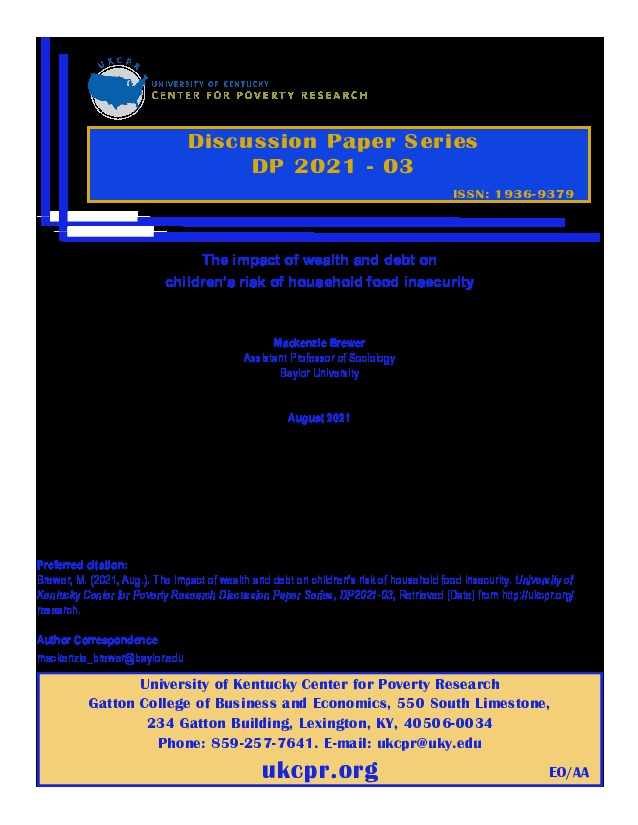In the United States, almost one in seven households with children have limited access to food. The problem of food insecurity is closely tied to a household’s financial circumstances. Yet, prior research has paid insufficient attention to the financial risk factors beyond poverty that impact food insecurity. Lack of liquid financial assets may compromise a household’s ability to smooth consumption during income shortfalls, while debt obligations, such as debt from credit cards or medical bills, may deplete financial resources and constrain food budgets. Using longitudinal data from the Panel Study of Income Dynamics (PSID) and mixed effects growth curve models, I estimate associations of household debt and liquid assets with food insecurity among households with children. Additionally, I disaggregate household debt by amount and type of debt incurred, including debt from housing, student loans, credit cards, medical bills, and other sources of unsecured debt. Results indicate significant heterogeneity in wealth and debt profiles based on food security status. Further, debt from unpaid medical bills, other sources of unsecured debt, and student loans increase the odds of household food insecurity net of income and other household characteristics. I also find that lack of liquid assets is an important determinant of food insecurity, independent of household income and debt. Considering the full spectrum of household finances, including lack of financial assets and specific debt obligations, is essential for identifying at-risk households and alleviating the problem of food insecurity.
Research
PSIDPDF Thumbnail
